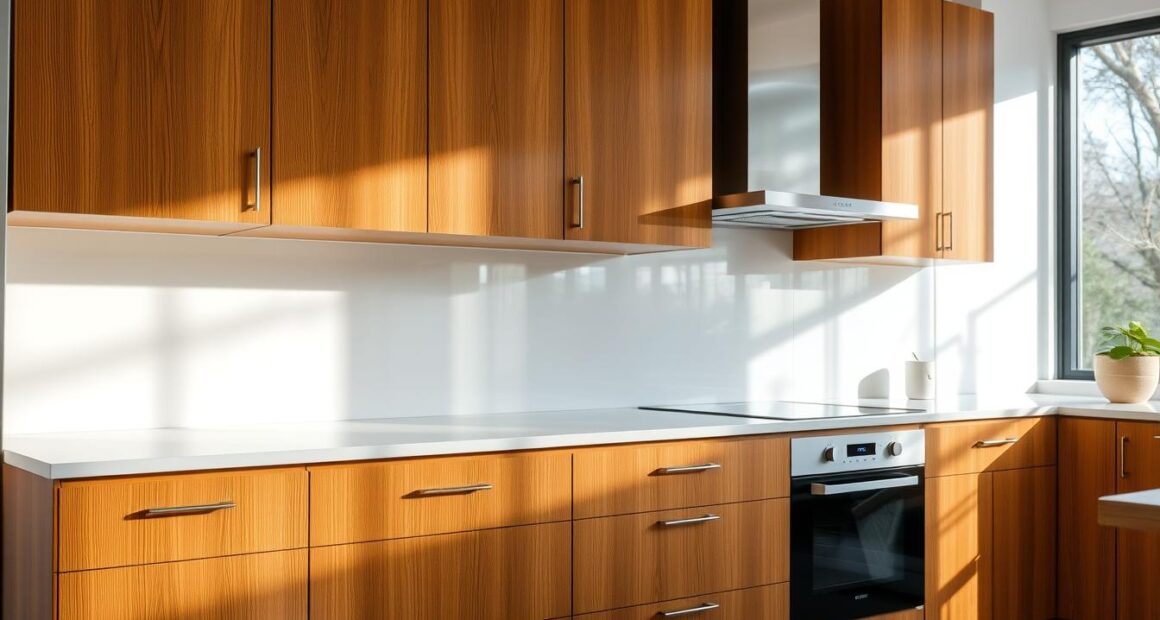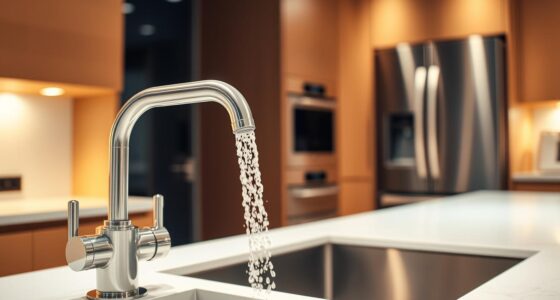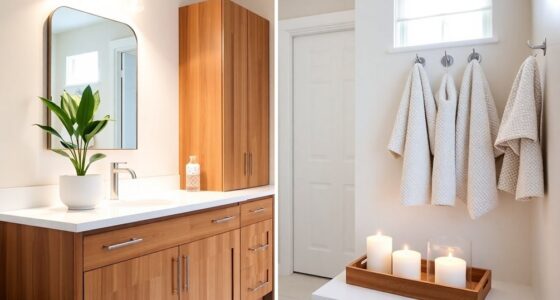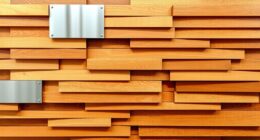Have you ever reached for a snack, only to touch sticky cabinets? It’s a frustrating moment. It can make you see your kitchen differently. Maybe you’ve seen the grease and grime on your wooden cabinets. They lose their charm. As you cook your favorite meals, the cabinets should make it better, not worse. You think your kitchen deserves better. So, let’s find out how to clean sticky wood cabinets easily. This guide helps you fix this kitchen problem and make your cabinets look new with simple steps.
Whether you’re new or experienced in cleaning wood cabinets, you’ll find useful tips here. We have eco-friendly ways to make them shine without harsh chemicals. You’ll learn why cabinets get sticky and how to make a DIY wood cleaner. This guide is your key to a clean kitchen that you’ll love using every day.
Key Takeaways
- Wooden kitchen cabinets can get covered in grease and grime, causing stickiness over time.
- Simple mixtures like vinegar and water are great DIY wood cleaners.
- Avoid harsh cleaners that can harm wood surfaces.
- Wiping your cabinets regularly can stop grease from building up.
- Using cabinet liners can protect inside surfaces and simplify cleaning.
- Polishing your cabinets often keeps them shiny and looking good.
Understanding the Problem of Sticky Wood Cabinets
Dealing with sticky wood cabinets in your kitchen can be a real headache. They get this way from cooking greasy foods, dirt, and not cleaning them enough. Grease and other residues stick to the surfaces, creating a tacky layer. This not only looks bad but can also damage your cabinets over time.
Common Causes of Stickiness
Sticky cabinets mainly happen because of daily cooking and cleaning. When you fry or sauté food, grease lands on the cabinet surfaces. This grease attracts dirt, making the stickiness worse. Factors include:
- Frequent cooking without protecting the surfaces
- Not cleaning often enough to remove grease and grime
- Using the wrong cleaning products like waxes or silicones
Understanding these causes is key to keep your cabinets in good shape, according to the experts.
How Grime Affects Your Cabinets
Over time, minor kitchen dirt can become a big problem for wood cabinets. The longer the grime stays, the harder it is to clean. You might need special cleaners or powerful degreasers to get rid of tough residues.
Maintaining a regular cleaning schedule helps avoid grease buildup. A mix of vinegar and water can also cut through the stickiness. This keeps your cabinets looking their best and in great condition.
Gathering Essential Cleaning Supplies
To freshen up sticky wood cabinets, getting the right cleaning tools is key. This not only makes cleaning easy but also keeps your cabinets in good shape. Make sure to choose items safe for wood. Eco-friendly cleaners are a great choice, reducing harmful chemicals in your home.
What You’ll Need for Cleaning
- Warm water
- Mild dish soap or specially formulated wood cleaner
- Microfiber cloths for effective dust trapping
- Soft-bristled brush for tackling stubborn grime
A good cleaning mix is 2 parts warm water and 1 part mild dish soap. This mix is safe for wood. Avoid using high alkaline cleaners like ammonia. They can change the color of the wood.
Eco-Friendly Alternatives
If you prefer eco-friendly cleaners, you can use:
- White vinegar (be sure to dilute it)
- Lemon juice for cutting grease naturally
- Olive oil to condition the wood
DIY cleaners work well and are better for the planet. Picking cleaners with a pH of 6 to 8 keeps your wood cabinets looking good. It’s also safe for your family.
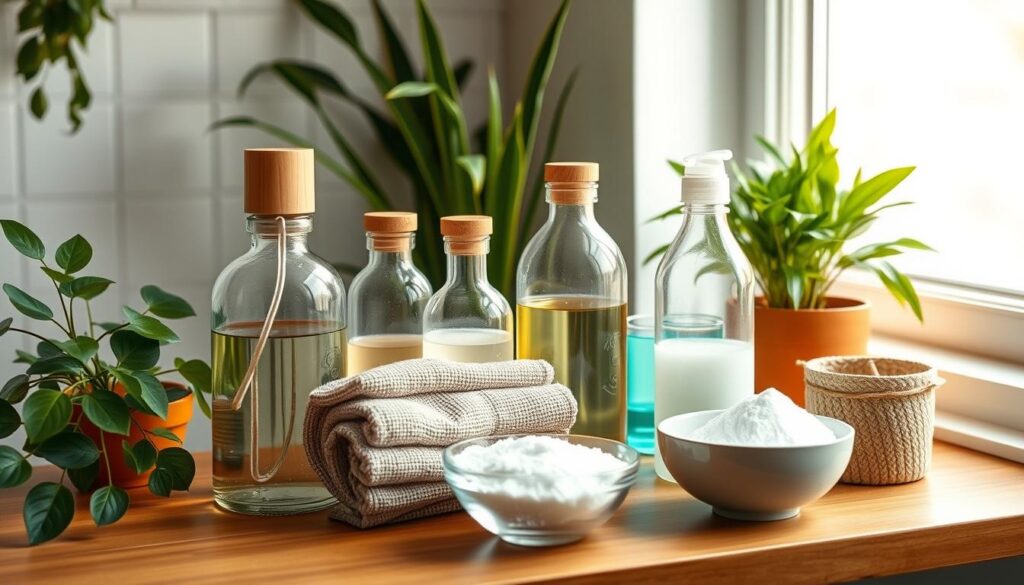
| Supply Type | Recommended Item | Benefits |
|---|---|---|
| General Cleaner | Mild dish soap | pH neutral and effective against grime |
| Eco-Friendly Cleaner | White vinegar | Natural grease cutter; must be diluted |
| Protective Tool | Microfiber cloth | Traps dust and avoids scratching |
| Scrubbing Tool | Soft-bristled brush | Gentle on wood while removing tough spots |
Step-by-Step Process on How to Clean Sticky Wood Cabinets
Getting your wood cabinets clean from stickiness is about being careful and making sure the wood’s finish stays safe. Start by getting your work area ready and picking up all the things you’ll need. This preparation makes the cleaning job smoother.
Preparation Before You Start
First, empty your cabinets. This lets you reach every spot that needs to be cleaned. Then, make a gentle cleaning mixture with warm water and a bit of mild dish soap. This kind of soap works well because it can break down grease. To avoid leaving water marks, it’s a good idea to use distilled water if you can.
Application Techniques for Effective Cleaning
Now, soak a microfiber cloth in your soapy water. Start wiping your cabinets with it, using soft, circular movements. This method helps get rid of grime without scratching the wood. For tough spots, mix some baking soda with water to make a paste. Put this paste on the stains and rub softly to get them off.
After scrubbing, you need to rinse the areas with clean water to get rid of soap left behind. Dry the wood well with a clean microfiber cloth, making sure it’s completely dry to avoid damage. Keeping up with these cleaning tips can make your cabinets stay beautiful and free from dirt build-up.

Effective DIY Cleaner Recipes for Wood Cabinets
Making your own cleaning solutions for wood cabinets is smart and saves money. You can mix up effective cleaners with items you already have. Here are two easy, but strong, recipes for those tough spots.
Simple Vinegar and Water Solution
A great mix is equal parts distilled white vinegar and warm water. This mix naturally fights grease and dirt. Use a damp cloth with the mix to clean the cabinets. Let it work for about a minute before drying with another cloth. But, be careful with this mix. It’s acidic and might harm finishes if used too much.
Baking Soda Paste for Stubborn Residue
Sometimes, stains just won’t budge. For these, try a baking soda paste. Mix equal parts baking soda and water to get a thick paste. It’s great for scrubbing hard-to-remove stains. Put the paste on stains, wait a few minutes, then scrub softly. It’s great for stains and gently polishes your wood cabinets too.
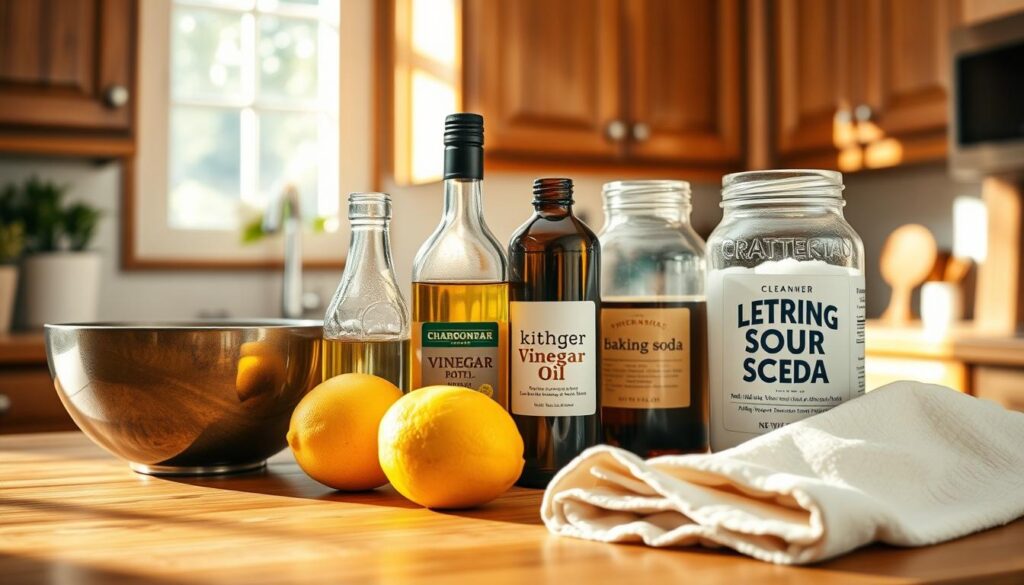
Cleaning Agents to Avoid with Wood Cabinets
When cleaning wood cabinets, pick your products wisely. Some cleaners can harm their finish and look. Knowing which cleaners to skip helps keep your cabinets beautiful for a long time.
Abrasive Cleaners and Their Risks
Abrasive cleaners, like scouring pads and powder, can damage wood cabinets. They may scratch and dull the surface. Instead, clean with soft cloths or microfiber to avoid harm. Avoiding harsh scrubbers is key to keeping wood looking great.
Harsh Chemicals That Damage Finishes
Some cleaners have harsh chemicals that could hurt wood cabinets. Avoid products with ammonia, bleach, or strong detergents. These can discolor and damage the wood’s protective coat. Instead, use milder solutions like diluted Dawn® Platinum. Gentle cleansers protect your cabinets while fighting grease buildup.
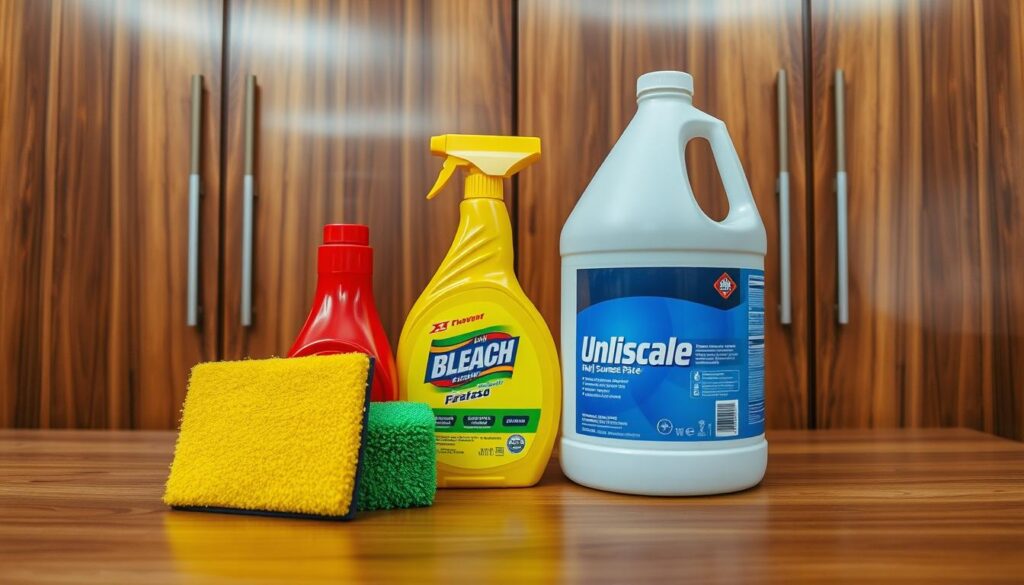
| Cleaning Product Type | Risk Level | Example Products | Preferred Alternatives |
|---|---|---|---|
| Abrasive Cleaners | High | Scouring pads, powders | Microfiber cloths, soft rags |
| Harsh Chemicals | High | Ammonia, bleach | Mild dish soap, vinegar solution |
| Commercial Polishers | Moderate | Wax with toxic chemicals | Wood furniture wax |
| Strong Detergents | High | Nail polish remover, paint thinner | Gentle cleansers |
Knowing which cleaning products to avoid can save your wood cabinets. Choose cleaners that are safe and keep your kitchen looking good.
Maintaining the Cleanliness of Your Wood Cabinets
To keep wood cabinets shiny, clean them regularly. Daily and weekly efforts help a lot. You’ll see a big difference.
Daily and Weekly Cleaning Routines
Here are some tips to keep your wood cabinets clean:
- Wipe down cabinets with a damp microfiber cloth after cooking to reduce grease and food particles.
- Employ a gentle cleaner or a 50/50 vinegar and water solution for weekly wipe-downs to keep surfaces shiny.
- Check for spills and clean them immediately to avoid long-term damage.
- Take everything out of cabinets quarterly to clean hidden areas and prevent stains from setting.
Using Cabinet Liners for Protection
Cabinet liners are great for extra protection:
- Cabinet liners protect against spills, scratches, and accumulated dust.
- They can be easily replaced, making cleaning less of a hassle.
- Various materials like adhesive liners or washable fabrics provide different levels of protection and style.
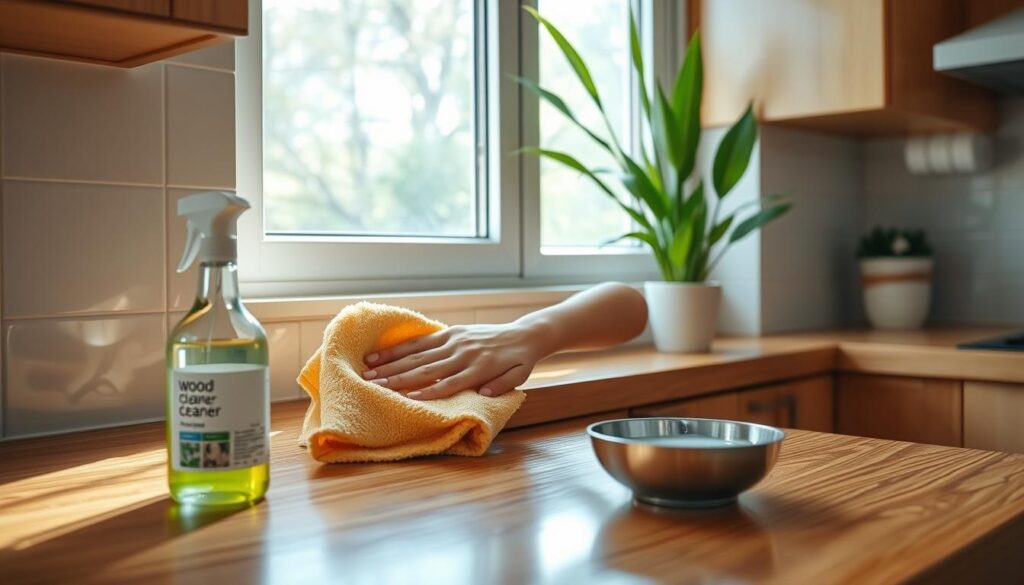
Additional Tips for Long-Term Care
To keep your wood cabinets looking great, focus on polishing and keeping them dry. Using the right methods for polishing and controlling humidity will help them last longer. Try these steps for the best care of your wood cabinets.
Polishing for a Shiny Finish
For that shiny look, you need to polish your cabinets correctly. You can use a commercial polish or even olive oil. Both can bring back the shine and protect them from daily damage. Here’s how you can polish your cabinets:
- Clean the surface with a mild detergent to remove grease and grime.
- Apply the polish with a soft cloth, moving in the direction of the wood grain.
- Buff the surface gently for an even sheen.
Protecting Wood Cabinets from Humidity
Humidity is bad news for wood cabinets. It’s important to keep humidity levels stable to avoid warping and mold. Here are some ways to protect your cabinets:
- Utilize a dehumidifier during humid conditions to reduce moisture levels.
- In dry seasons, a humidifier can help add necessary moisture to prevent cracking.
- Keep windows closed during rainy or humid weather to minimize exposure.
Focus on these polishing and humidity control methods to keep your wood cabinets in top shape for years.

| Care Tip | Details |
|---|---|
| Polishing Frequency | Every 3 to 6 months, depending on use and environment. |
| Ideal Humidity Level | Maintain humidity levels between 30% to 50%. |
| Product Recommendations | Use commercial wood polish or natural options like olive oil. |
| Seasonal Tips | Dehumidifier in summer, humidifier in winter. |
Conclusion
Cleaning sticky wood cabinets can be easy and not scary. You just need the right methods and eco-friendly cleaners. You can make your cabinets look new again with simple ingredients like mineral oil and white vinegar. Using these right and often is important to keep your cabinets beautiful.
Follow these tips to keep your cabinets clean and shiny. Dust them often and use protectants after cleaning to help them last longer. By doing these things regularly, cleaning sticky wood cabinets becomes easy. And, your cabinets will stay looking great for many years.
Now you know how to keep your wood cabinets nice and clean. Use these easy and green tips to make your cleaning tasks rewarding. You’ll enjoy your cabinets’ beauty and function more this way.
